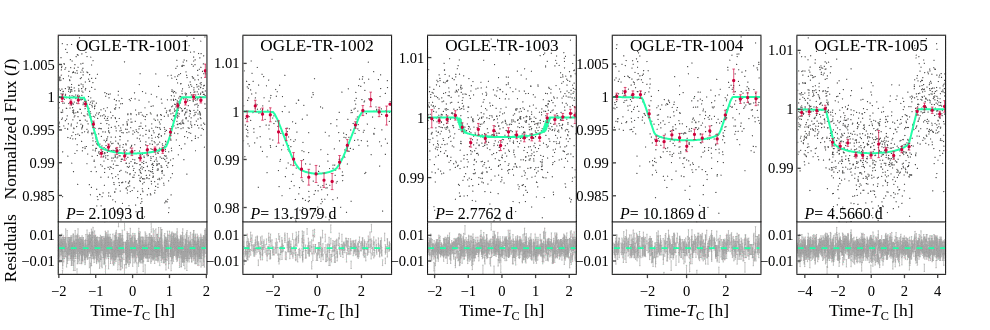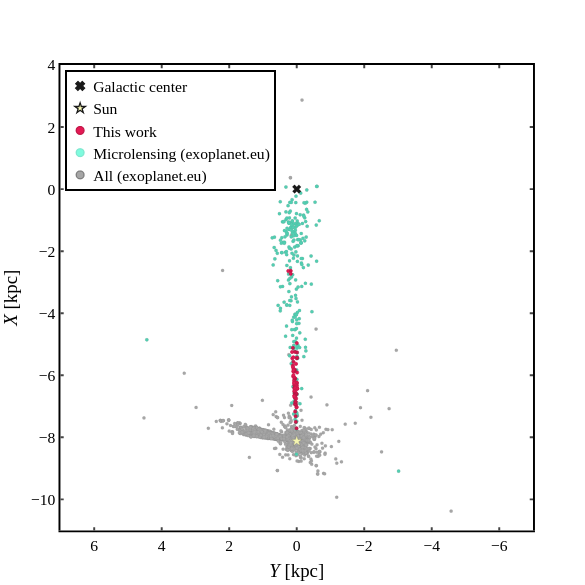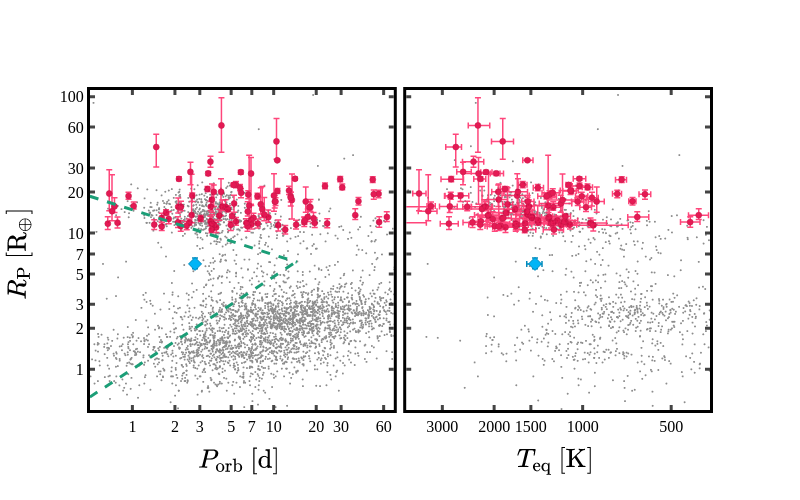The OGLE Collection of Variable Stars
Candidates for Transiting Planets in OGLE-IV Galactic Bulge Fields
We present results of a search for transiting exoplanets in 10-yr long photometry with thousands of epochs taken in the direction of the Galactic bulge. This photometry was collected in the fourth phase of the Optical Gravitational Lensing Experiment (OGLE-IV). Our search covered ≈ 222 000 stars brighter than I = 15.5 mag. Selected transits were verified using a probabilistic method. The search resulted in 99 high-probability candidates for transiting exoplanets.
The estimated distances to these targets are between 0.4 kpc and 5.5 kpc, which is a significantly wider range than for previous transit searches.
The planets found are Jupiter-size, with the exception of one (named OGLE-TR-1003b) located in the hot Neptune desert. If the candidate is confirmed, it can be important for studies of highly irradiated intermediate-size planets.
The existing long-term, high-cadence photometry of our candidates increases the chances of detecting transit timing variations at long timescales. Selected candidates will be observed by the future NASA flagship mission, the Nancy Grace Roman Space Telescope, in its search for Galactic bulge microlensing events, which will further enhance the photometric coverage of these stars.
OGLE photometric data are available to the astronomical community from the OGLE Internet Archive and through the on-line search form in the OGLE Collection of Variable Stars.
PLEASE cite the following paper when using the data or referring to these OGLE results:
Mróz et al., 2023,
Acta Astronomica, 73, 127,
(arXiv:2311.07647)
Any comments about the data and the form of their presentation are welcome as they can improve the future releases of OGLE analysis. Send your messages to this address.
 back
back

